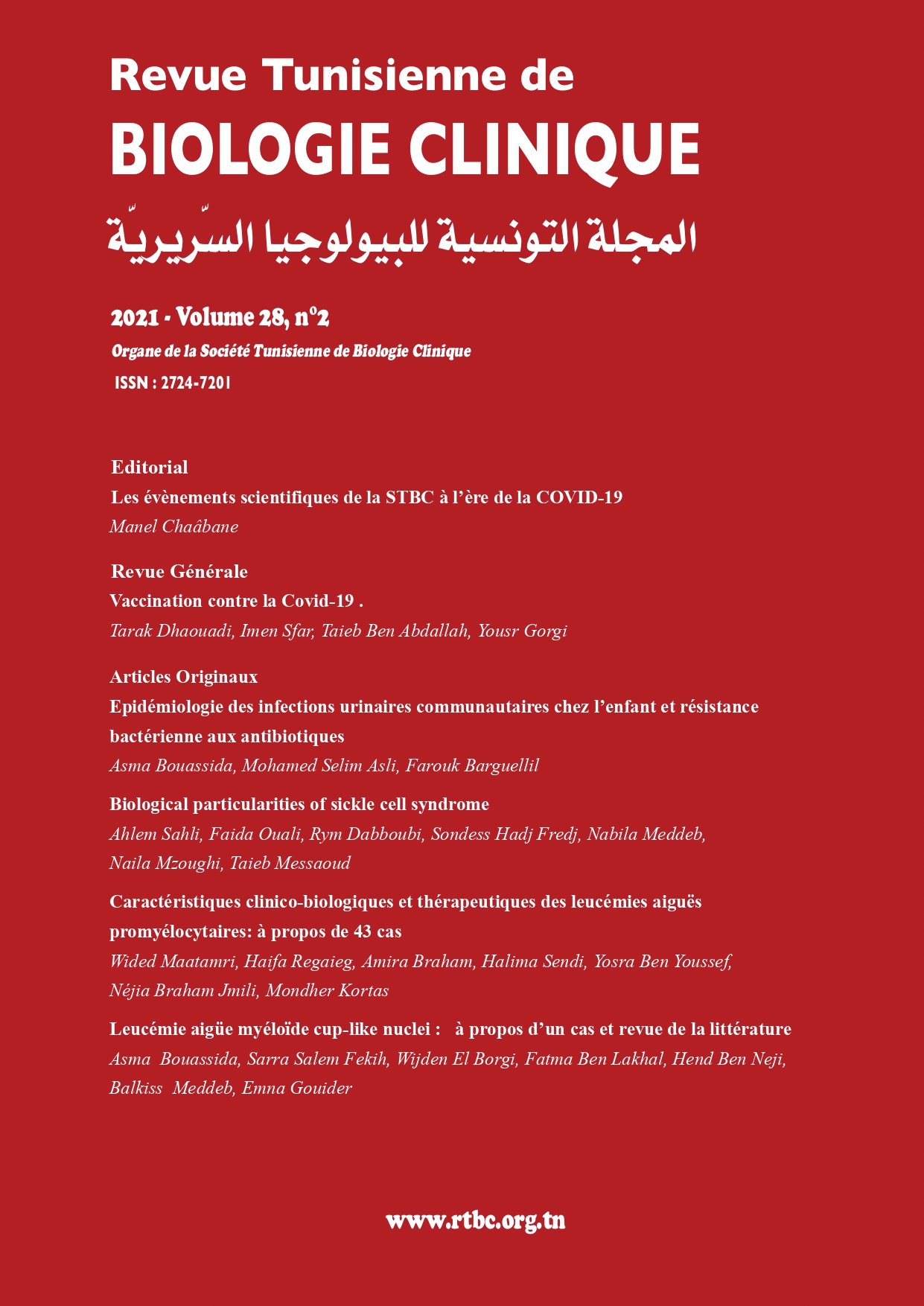Abstract
Introduction: Acute promyelocytic leukemia constitutes a particular entity by its clinical, biological, cytogenetic and therapeutic characteristics. The aim of our work is to draw up a clinico-biological profile of acute promyelocytic leukemia as well as the therapeutic management in central Tunisia. Materials and methods: This is a retrospective descriptive study of 43 patients with acute promyelocytic leukemia diagnosed at the Hematology Laboratory and treated at the Clinical Hematology Department of Farhat Hached Hospital in Sousse (Tunisia), between January 2005 and December 2017. The biological diagnosis was made on cytological (blood count and myelogram) and cytogenetics (karyotype and molecular biology). The induction treatment was based on the use of all-transretinoic acid. Results: We report 43 patients, 22 women (51%) and 11 men (49%), with a mean age at diagnosis 31.67 years (±16 .3years). The reasons for consultation were related to signs of bone marrow failure: an anemic syndrome in 41 cases (95%) and a hemorrhagic syndrome in 33 cases (77%). The blood count showed normochromic normocytic anemia in 41 cases (95%), thrombocytopenia in40 cases (93%) aggravated by disseminated intravascular coagulation and leukopenia in 14 cases (33%). Cytological analysis of marrow allowed the diagnosis of acute promyelocytic leukemia in 41patients (95%) with distinction of 4 morphological aspects: classical acute promyelocytic leukemia with presence of bundled Auer bodies (32 cases, 78%), microgranular (4 cases, 9.8%), hyperbasophilic (1 case, 2.4%) and mixed (4 cases, 9.8%). According to the SANZ score, patients were classified into different risk stages: 10 high-risk, 23 intermediate-risk and 10 low-risk patients, all of whom received transretinoic acid and were treated according to one of the two protocols: LPA99 or AIDA. The post-induction complete remission rate was 91% and the overall survival at 2 years was 72%. Conclusion: needed to improve the prognosis of these patients.

This work is licensed under a Creative Commons Attribution 4.0 International License.
Copyright (c) 2021 Revue Tunisienne de BIOLOGIE CLINIQUE

